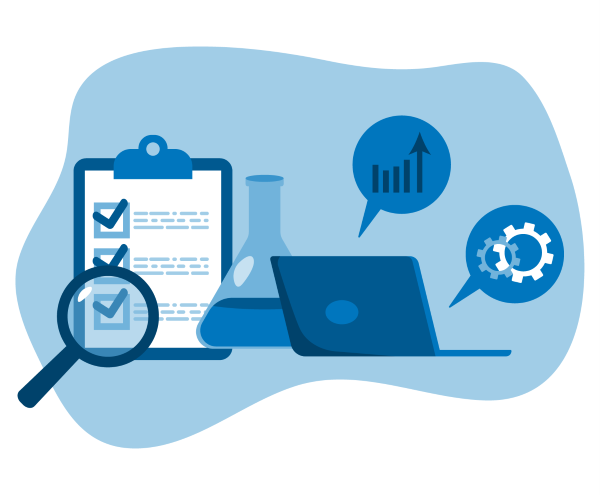FY20 Annual Report: Research
Supporting Research to Enrich Lives

Even with a global pandemic affecting every aspect of their daily responsibilities, the Johns Hopkins Community Physicians (JHCP) research department still managed to back 53 actively enrolling projects and provide 24 letters of support – both increases over the previous fiscal year. One of their goals was to participate in at least two Patient-Centered Outcomes Research Institute (PCORI) or other large, patient-centered research initiatives. Astoundingly, they participated in nine. For example, RICH LIFE (Reducing Inequities in Care of Hypertension: Lifestyle Improvement for Everyone) received a one-year extension in fiscal year 2020.
The RICH LIFE Project was developed to address blood pressure and heart disease health disparities among Black and Hispanic populations. Co-principal investigator (PI) and professor in The Johns Hopkins University’s Bloomberg School of Public Health, Jill Marsteller explains that these inequities exist across the country, often a symptom of extra pressures outside of the clinic and higher rates of negative social determinants of health, like access to health care, the ability to keep up with medication, financial pressures and access to healthy, affordable foods resulting from structural racism. Marsteller and co-PI Lisa Cooper, national expert in health care disparities and a physician at East Baltimore Medical Center, wanted to address this health inequity by comparing whether they could achieve better outcomes from clinics’ efforts to address social needs, or if extra support from outside of the clinic setting would yield better results for patients who have trouble controlling their blood pressure.
Thirteen JHCP practices, along with several Federally Qualified Health Centers (located in the Baltimore region, with one in Pennsylvania), participated in the study. These locations were split into two arms: a control group and an intensive intervention group.
The control group carried on with usual care of their patients, while the intensive condition practices added a care manager and community health worker (CHW) to their care teams. They also had access to a panel of specialists for questions or advice.
In addition to the expanded care team for the intensive condition, the research team provided both groups with three extra resources. First, both groups had access to a new quality dashboard that separates data based on patient race and ethnicity. This allowed providers to look for trends in their own practice that may indicate differences in how they are managing hypertension across segments of their patient population. There was also a Johns Hopkins Health System-level education initiative focused on promotion of health equity. Finally, both the control and intensive practices received extra training and protocols for accurately measuring blood pressure. The study even provided automatic blood pressure monitoring devices for sites that did not already have them.
RICH LIFE is now in its sixth and final year; the first was mostly dedicated to planning, with four years of active implementation. Marsteller explains that during this final year, they will synthesize data from the past four years, gather their findings and interpret what they have learned. A unique part of their final year was the inclusion of the town hall-style meetings on September 9 and December 9, 2020, where everyone who participated in the study could share their thoughts. The piece they have seen the most impact from and interest in is the incorporation of the care manager and CHW roles into practice.
“We want to allow people who face greater challenges in their day-to-day lives to reach the same level of health outcomes by giving them the support and resources they need to get there."
These care team members served as a great resource to patients in the intensive condition of the study. Care managers, typically nurse-trained, can provide clinical advice and offer extra support to patients about medications and healthy eating. Community health workers, most of which are from the communities they serve, are not clinically trained, but are available to provide self-care motivation and training and connect patients to non-clinical resources in their communities – like transportation services, for example. In this way, the CHWs make connections related to social determinants of health. Both roles form solid relationships with patients.
Marsteller hopes that one of the study’s biggest takeaways will be a general understanding that people are facing barriers that do not have anything to do with the clinical system. “Primary care providers are in a position where they want to do more to help their patients, but often they don’t have the time or might not know how to connect patients to the resources they need,” she says. To address these social determinants, sometimes patients need someone to actively support them beyond the clinical support of providers and that is where care managers and CHW teams can expand the way that primary care is delivered.
“We want to allow people who face greater challenges in their day-to-day lives to reach the same level of health outcomes by giving them the support and resources they need to get there,” Marsteller says. In pursuit of health equity, the RICH LIFE team, supported by the JHCP research department, is enriching the lives of patients everywhere.
